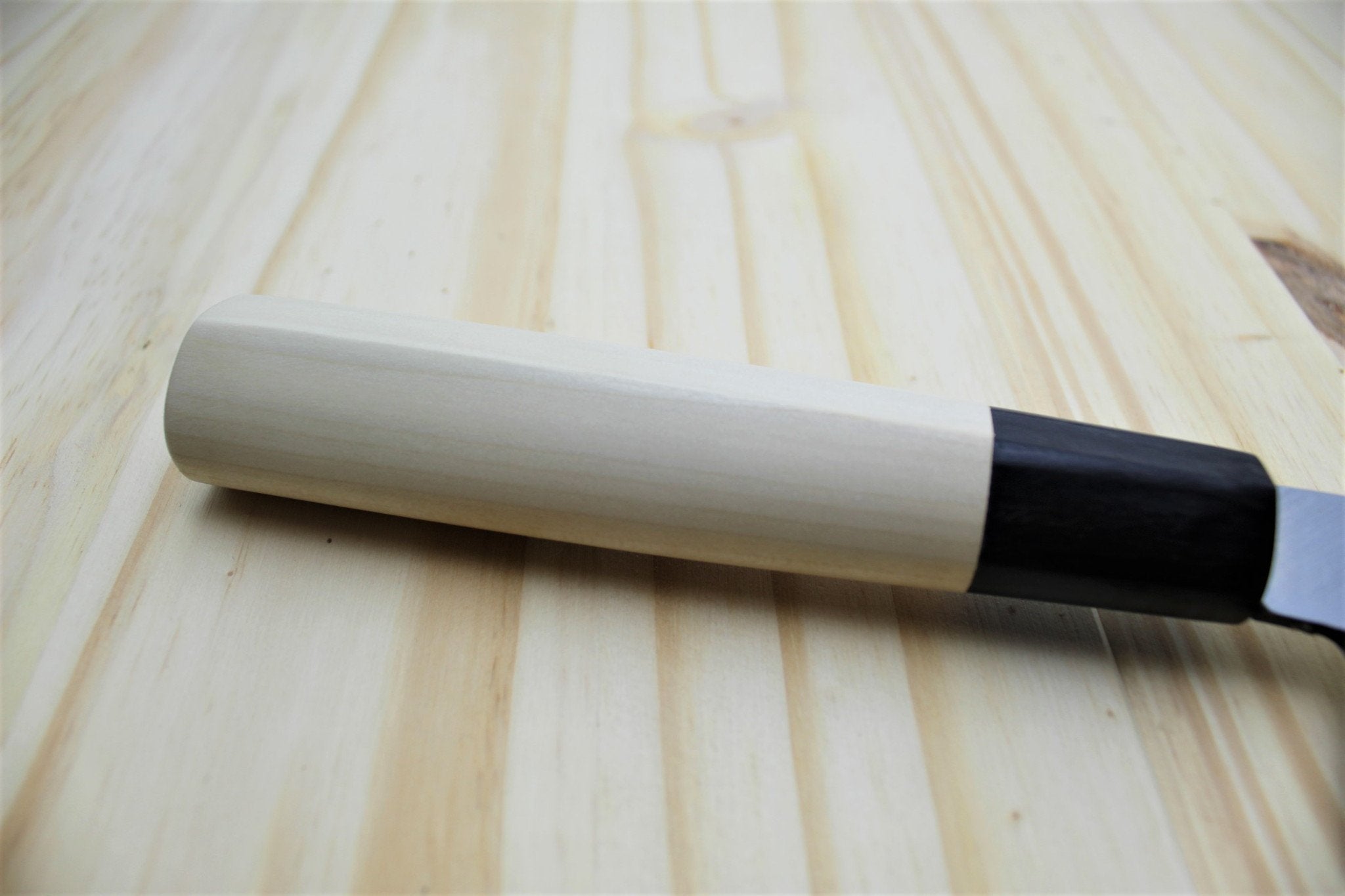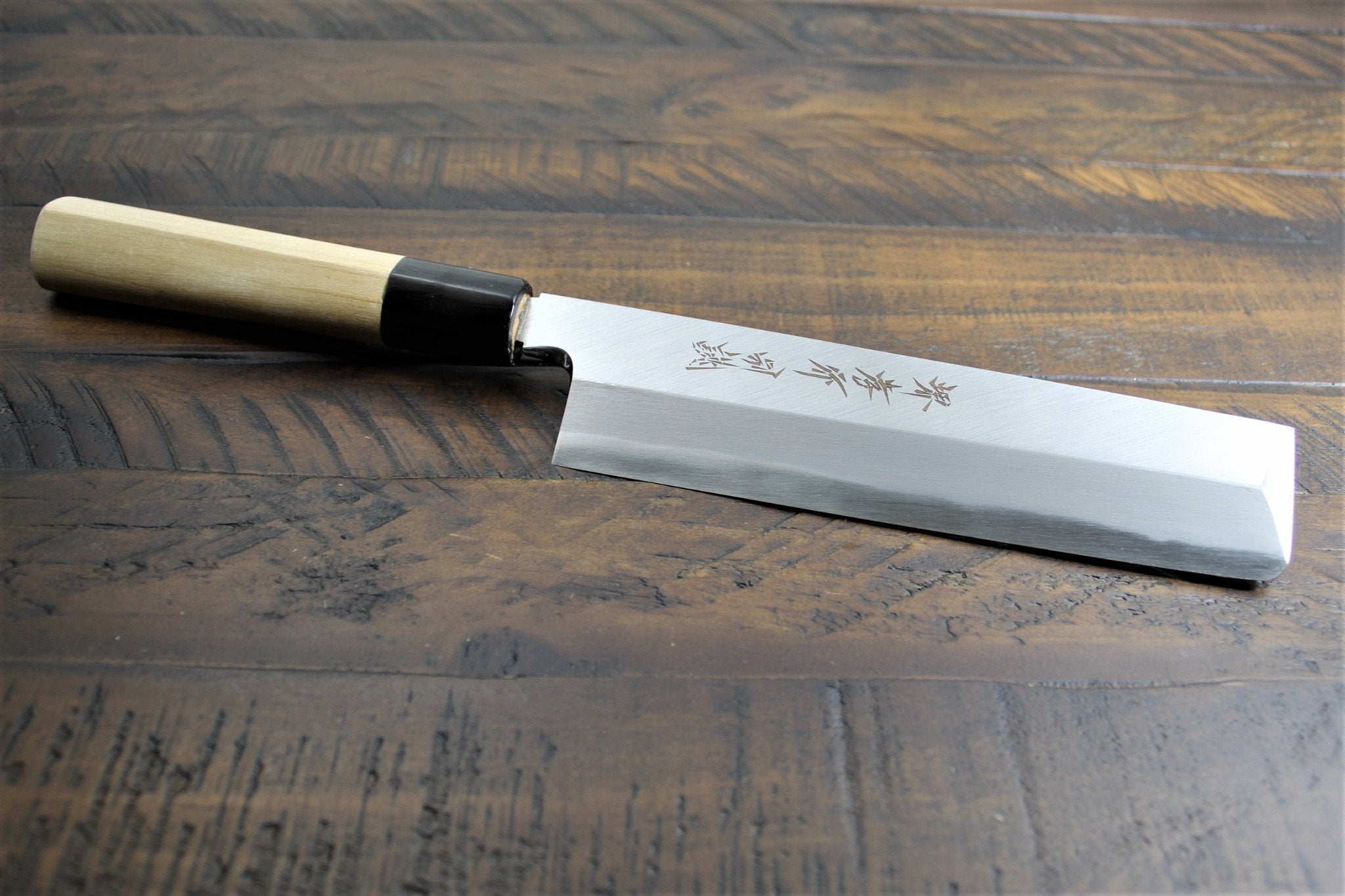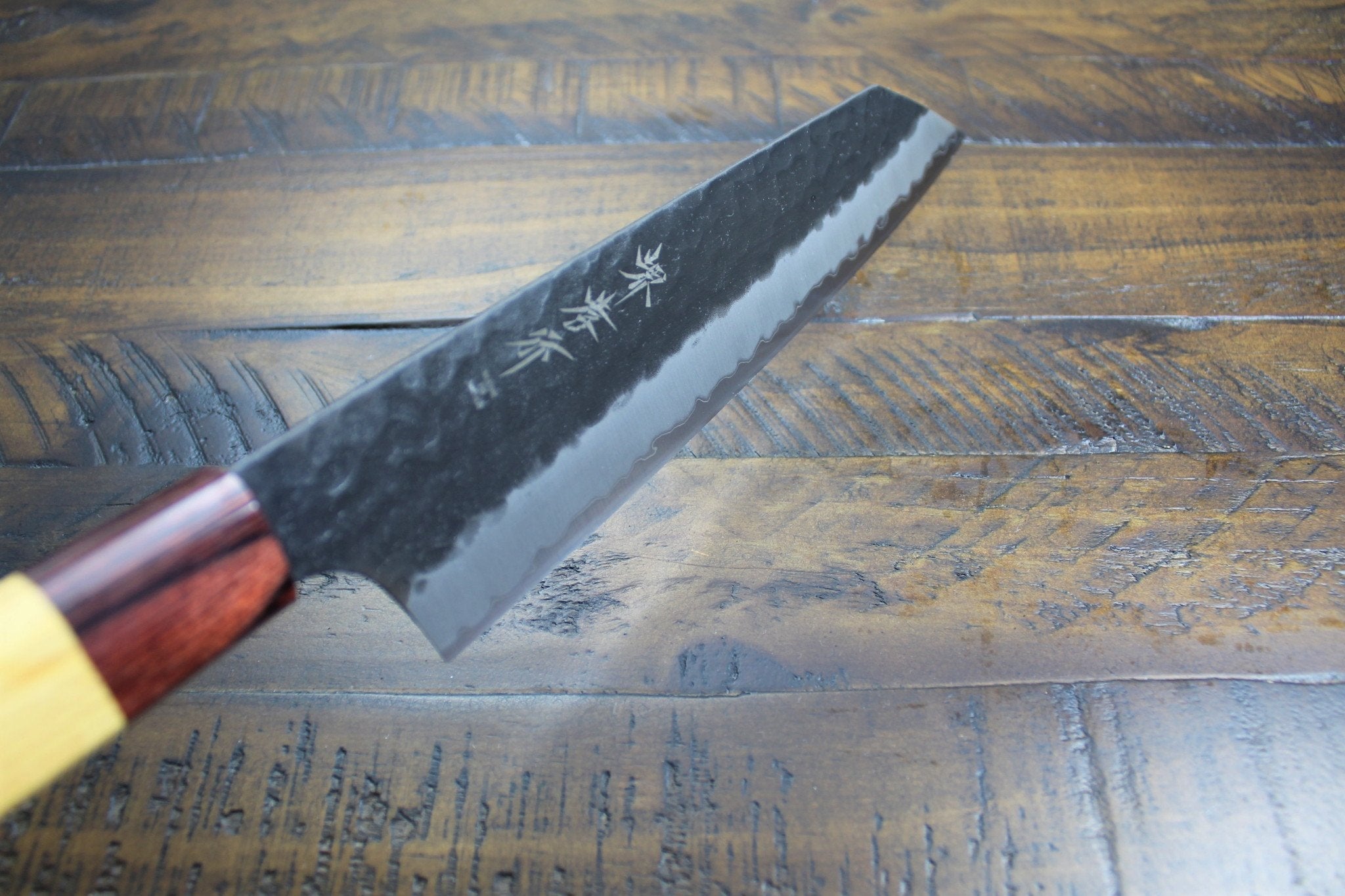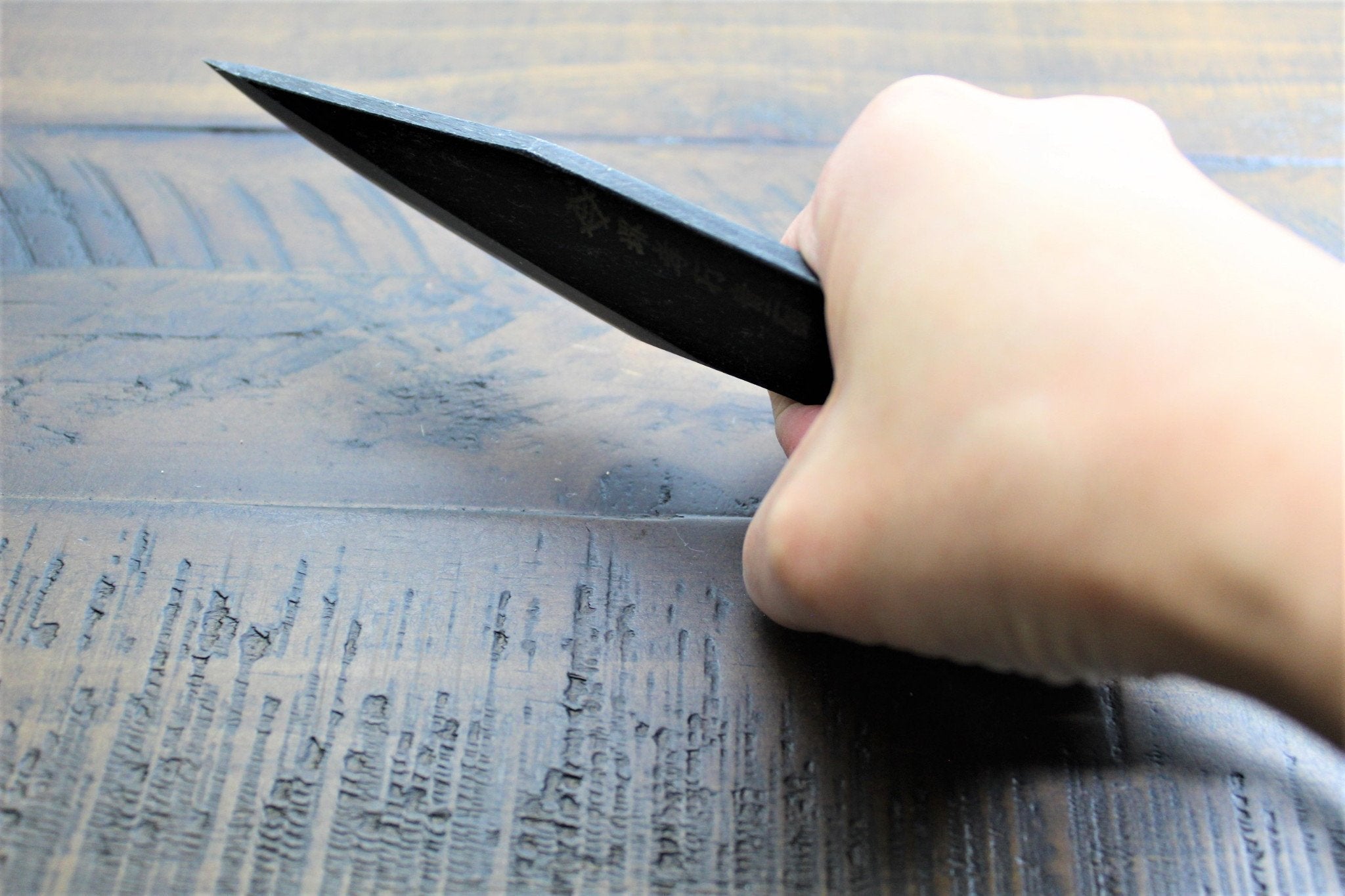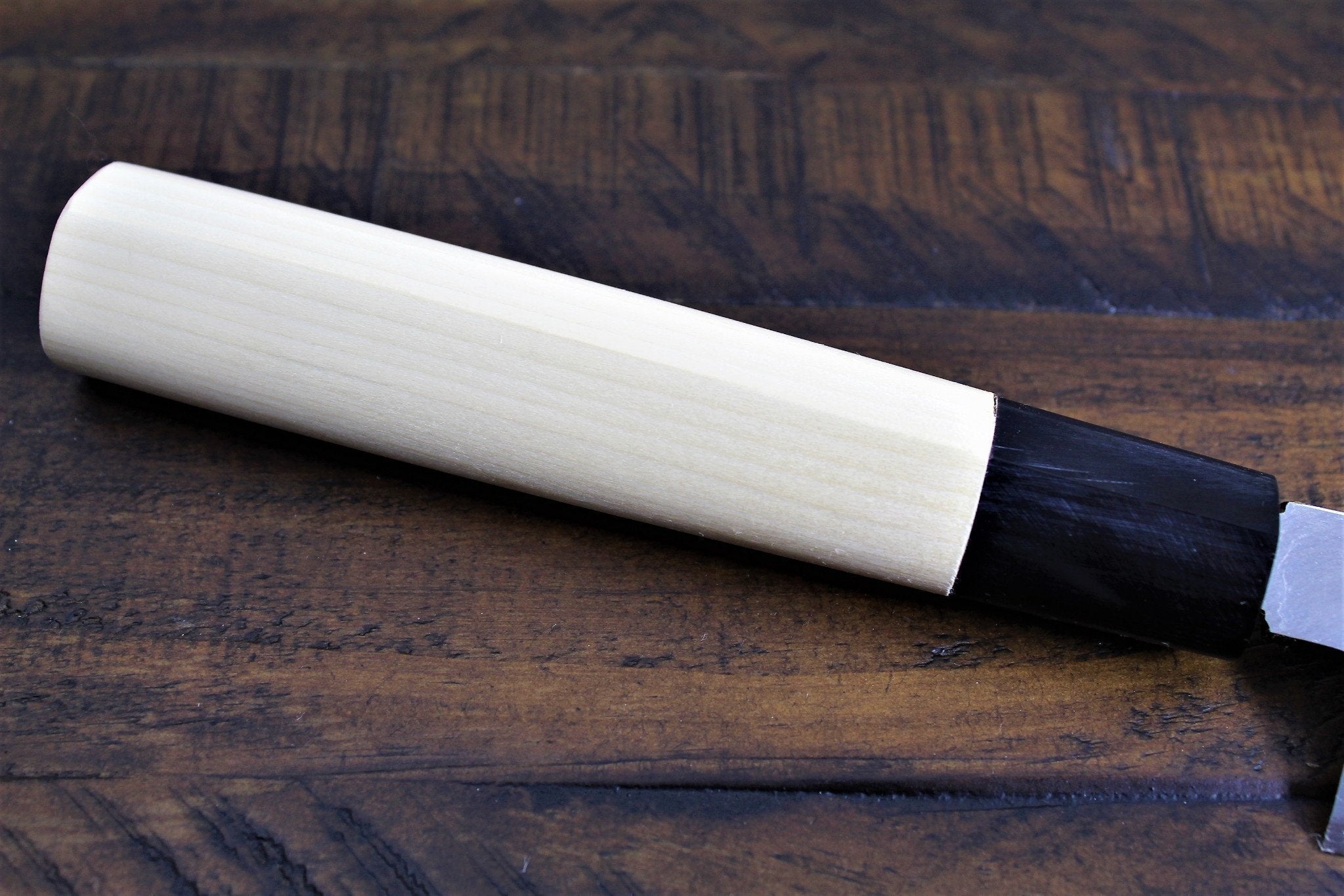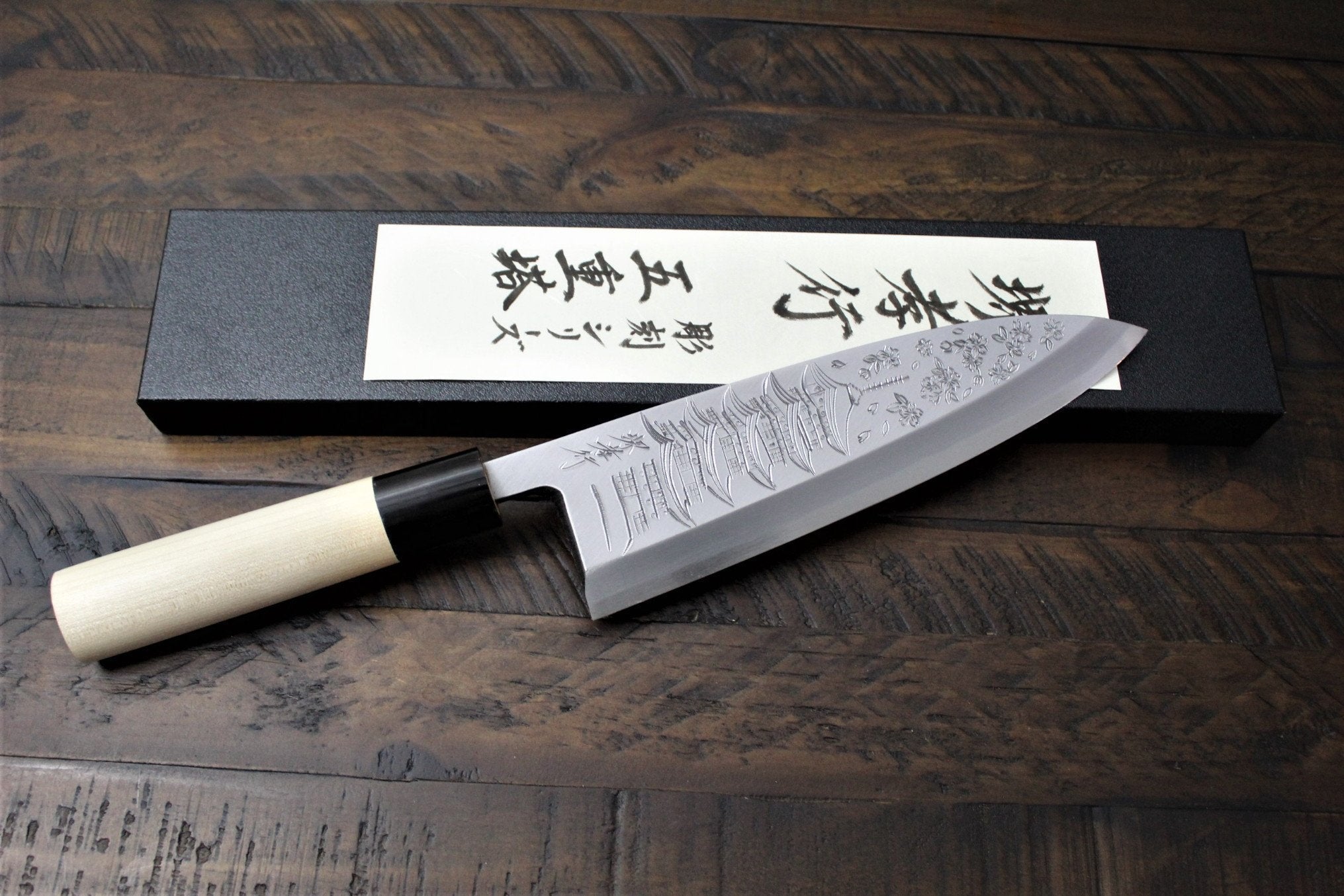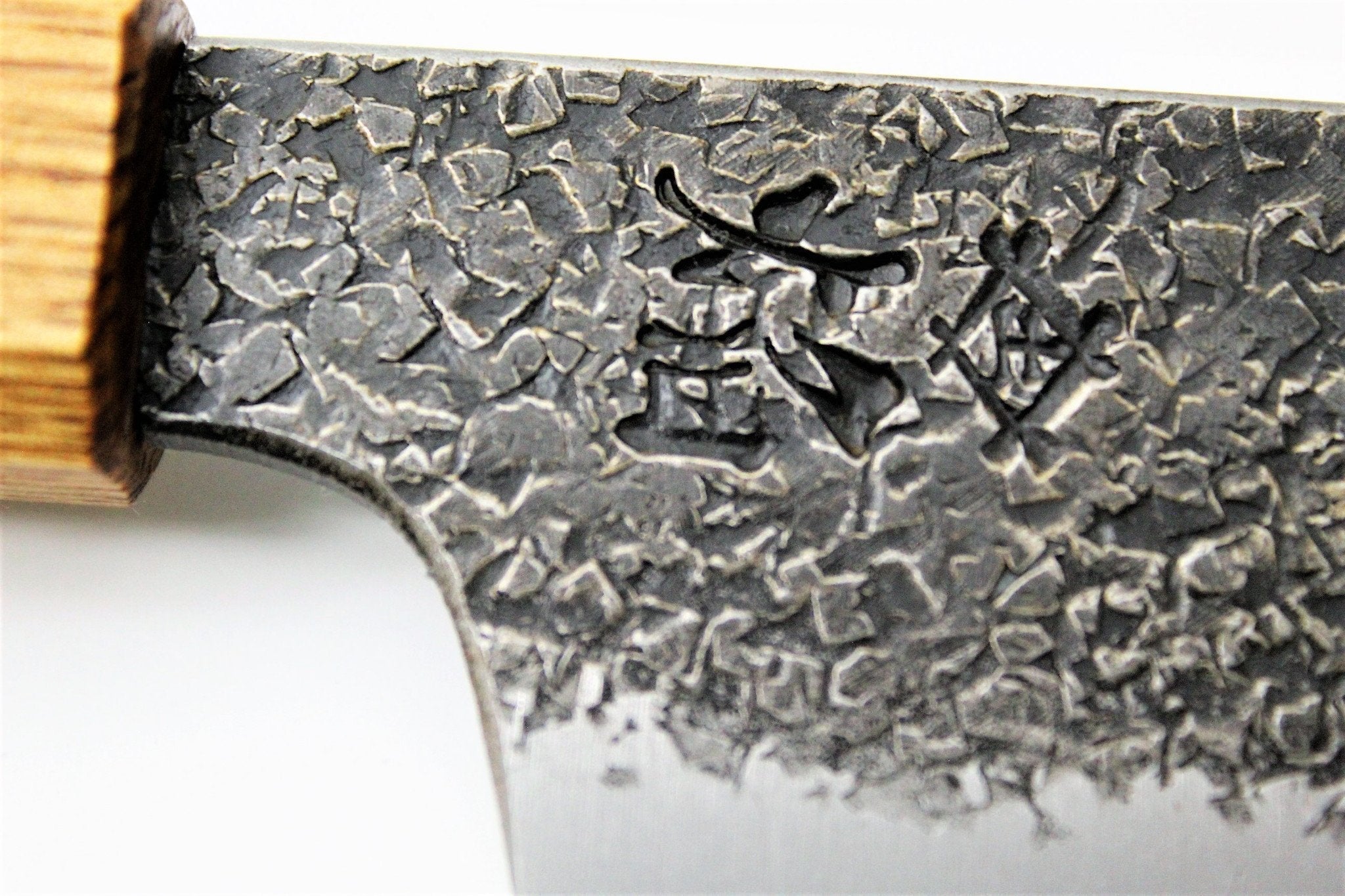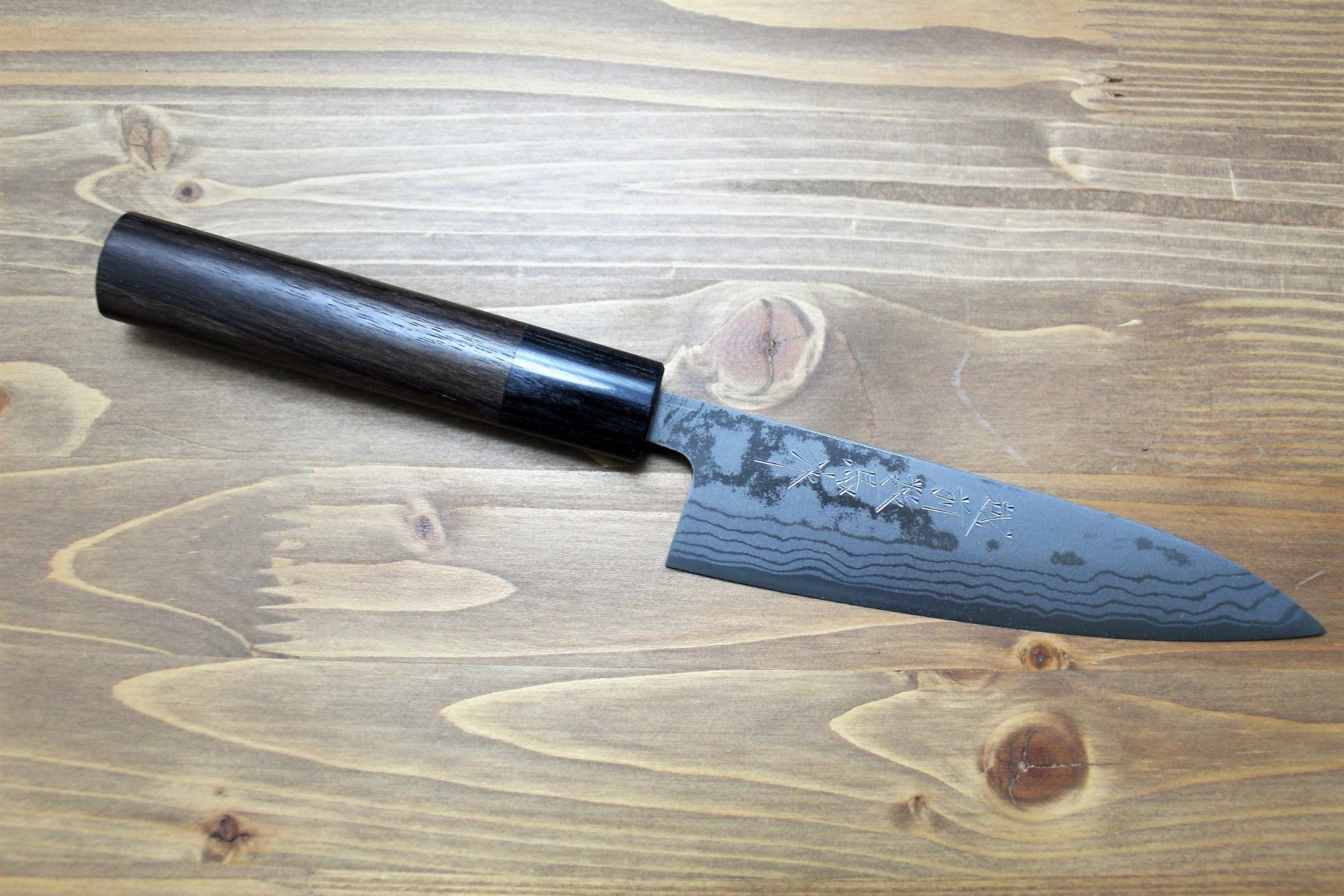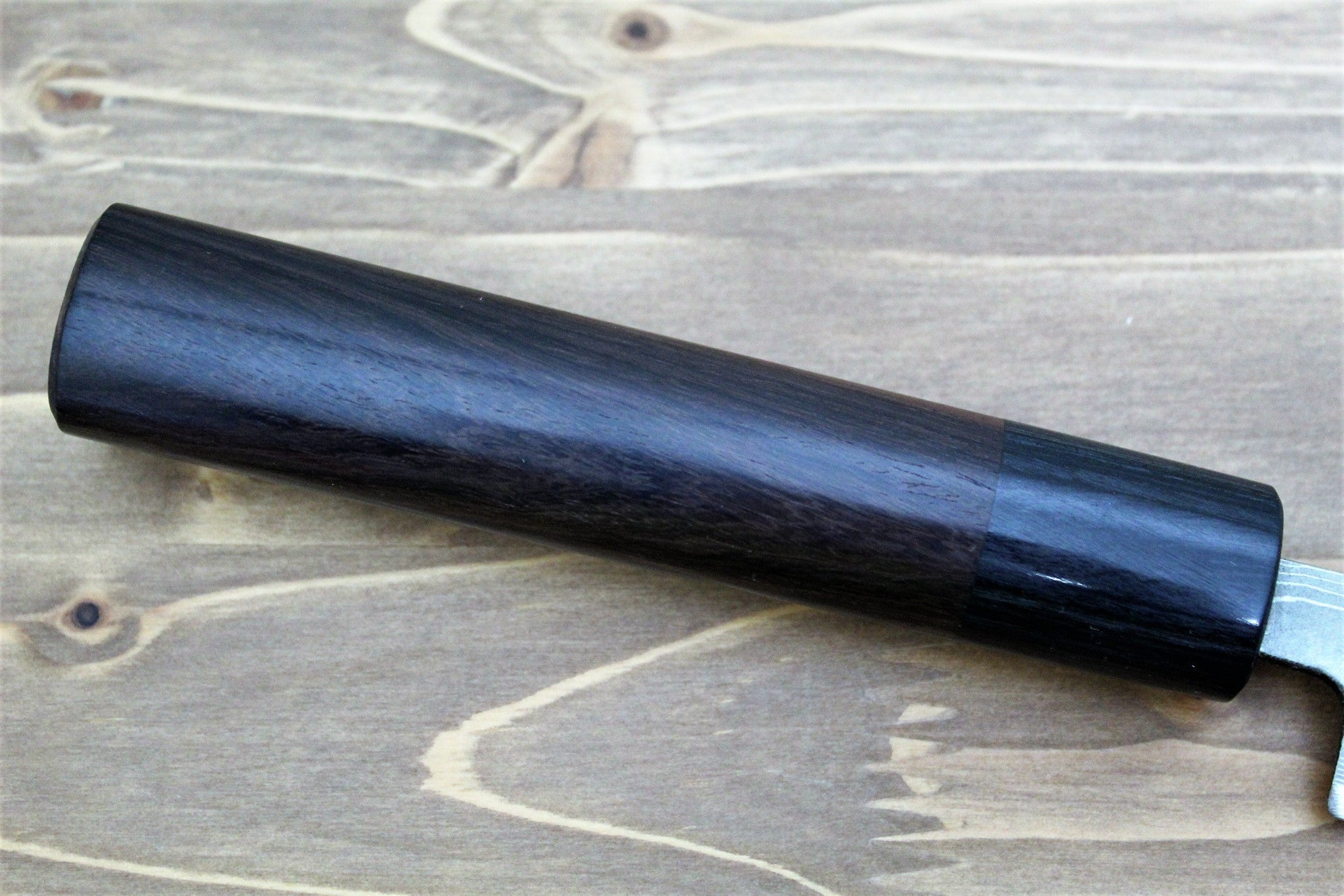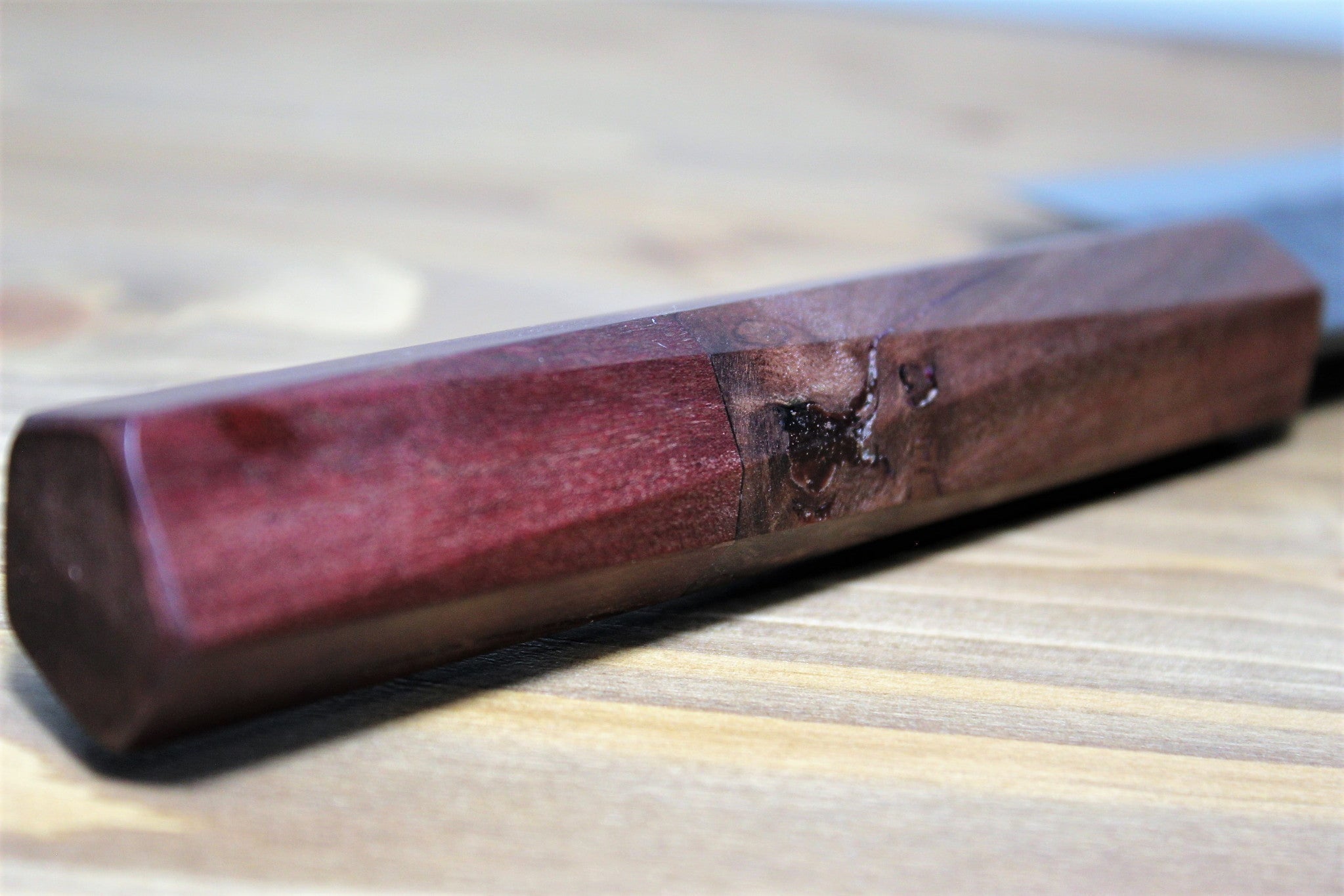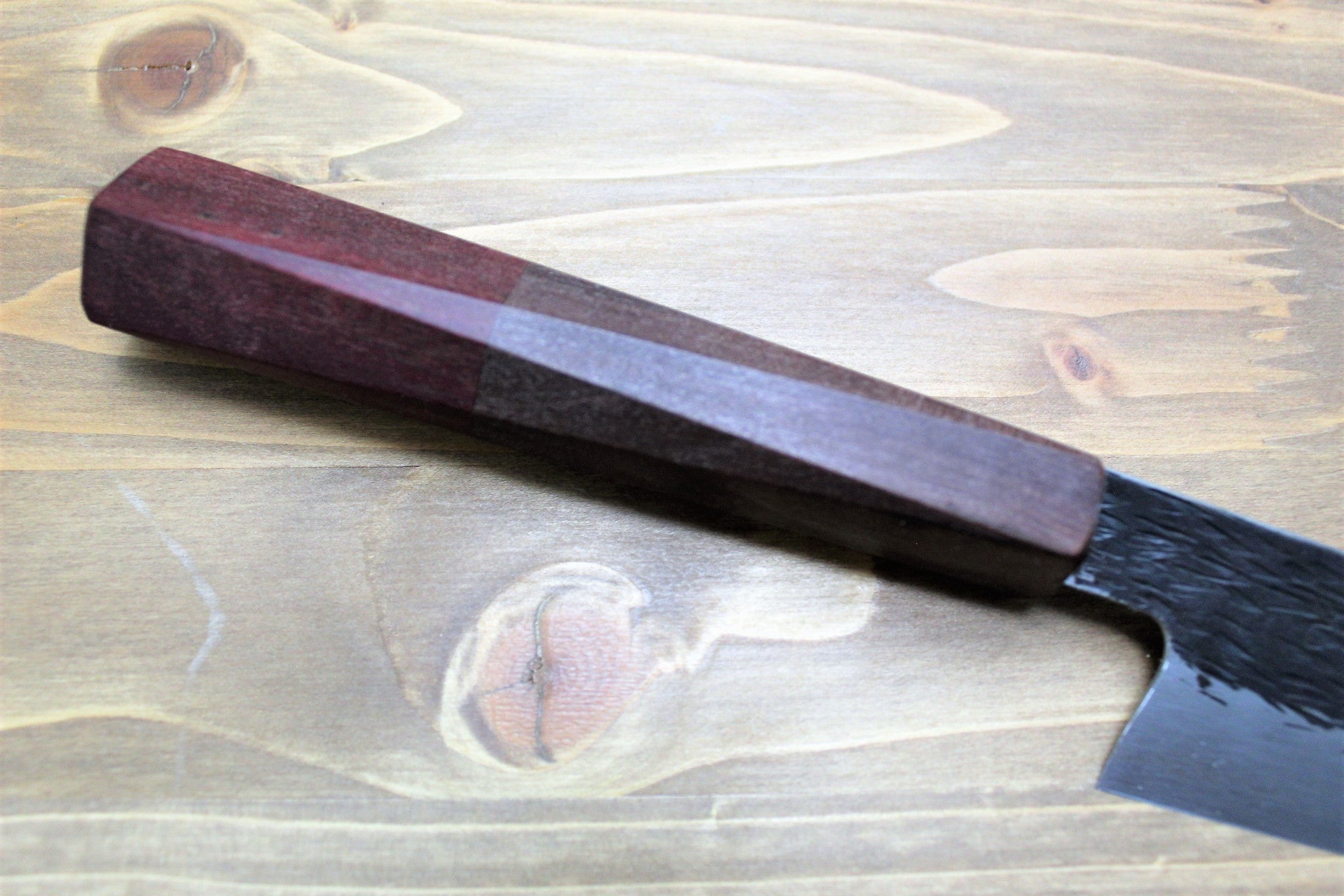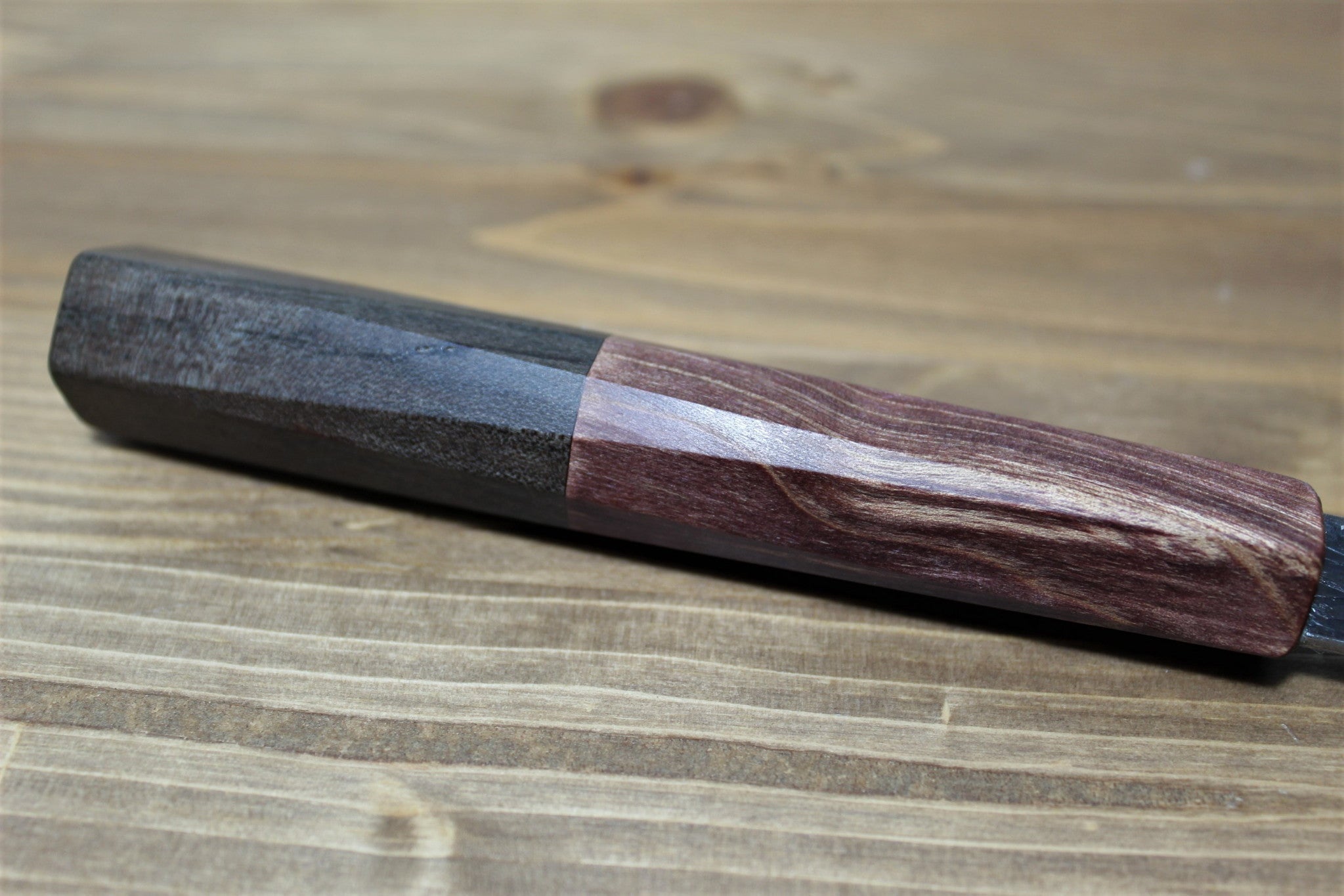Filters
Sakai Takayuki Gyuto Kurouchi Hammered Finish Aogami Super 210mm (8.3") /240mm(9.4") Japanese Chef Knife
Sale priceFrom $279.65
Regular price$329.00
Sakai Takayuki Kengata Santoku 160mm (6.3") Aogami Super / Blue Super Kurouchi Hammered Finish
Sale price$254.15
Regular price$299.00
Sakai Takayuki Santoku 170mm (6.7") Kurouchi Aoniko / Blue Steel #2
Sale price$169.15
Regular price$199.00
Sakai Takayuki Nakiri Knife 170mm (6.7") Kurouchi Aoniko / Blue Steel #2
Sale price$194.65
Regular price$229.00
Sakai Takayuki Kamagata Usuba Knife with Buffalo Horn Handle White Steel 180mm (7.1") /210mm (8.2")
Sale priceFrom $160.65
Regular price$189.00
Sakai Takayuki Gyuto Japanese Chef Knife 210mm (8.3") Kurouchi Aoniko / Blue Steel #2 with Walnut Handle
Sale price$237.15
Regular price$279.00
Usuba Knife / Nakiri Knife White Steel #2 180mm (7.1") Sakai Takayuki
Sale price$245.65
Regular price$289.00
Sakai Takayuki Outdoor Knife Aoniko Blue Steel #2 with Saya - Homura
Sale price$364.65
Regular price$429.00
Sakai Takayuki Petty Knife 120mm (4.7") Aoniko Honyaki (BLUE STEEL #2)
Sale price$135.15
Regular price$159.00
Sakai Takayuki Kengata Gyuto Kurouchi Hammered Finish Aogami Super 190mm (7.5") Japanese Chef Knife
Sale price$220.15
Regular price$259.00
Sakai Takayuki Outdoor Knife 120 mm (4.7") Aoniko Blue Steel #2 with Saya & Leather Strap - Kawasemi
Sale price$322.15
Regular price$379.00
Sakai Takayuki Gyuto Kurouchi Aoniko / Blue Steel #2 210mm (8.3") Japanese Chef Knife - Chinese Quince Handle
Sale price$254.15
Regular price$299.00
Sakai Takayuki Deba Knife with Buffalo Horn Handle White Steel 135mm (5.3") - 210mm (8.2")
Sale priceFrom $143.65
Regular price$169.00
Sakai Takayuki Shobu Knife White Steel 300mm (11.8") with Buffalo Horn Handle Kasumi Togi
Sale price$203.15
Regular price$239.00
Sakai Takayuki Takohiki Slicer Knife with Buffalo Horn Handle White Steel #2 Kasumi Togi Sakai Takayuki
Sale priceFrom $143.65
Regular price$169.00
Sakai Takayuki Petty Knife 135mm (5.3") Aogami Super Kurouchi Hammered Finish
Sale price$135.15
Regular price$159.00
Sakai Takayuki Outdoor 80mm Knife Aoniko Blue Steel #2 with Leather Saya - Kotengu
Sale price$169.15
Regular price$199.00
Sakai Takayuki Pre Order Purchase Custom Order Decorative Deba Knife with Buffalo Horn Handle White Steel 210mm (8.3")
Sale price$764.15
Regular price$899.00
Sakai Takayuki Honesuki Boning Knife with Japanese steel 150mm (5.9")
Sale price$109.65
Regular price$129.00
Honesuki Boning Knife 150mm (5.9") with White Steel #2 Single Bevel
Sale price$254.15
Regular price$299.00
Sakai Takayuki Handmade Nakiri Knife Homura Guren Aoniko / Blue Steel #2 180mm (7.1")
Sale price$339.15
Regular price$399.00
Sakai Takayuki Kengata Gyuto Homura Guren Aoniko / Blue Steel #2 225mm (8.9") Japanese Chef Knife
Sale price$407.15
Regular price$479.00
Sakai Takayuki Kengata Petty Knife Homura Guren Aoniko / Blue Steel #2 150mm (5.9")
Sale price$254.15
Regular price$299.00
Sakai Takayuki Deba Knife 120 mm (4.7") - 210 mm (8.3")
Sale priceFrom $92.65
Regular price$109.00
Sakai Takayuki Petty Knife 150mm (5.9") Aogami Super / Blue Super Kurouchi Hammered Finish
Sale price$135.15
Regular price$159.00
Sakai Takayuki Kengata Gyuto Homura SP with Saya 225mm (8.8") - Aoniko (Blue Steel #2)
Sale price$832.15
Regular price$979.00
Sakai Takayuki Homura Kogetsu Sujihiki with Saya 240mm (9.4") - Aoniko/ Blue Steel #2
Sale price$509.15
Regular price$599.00
Sawakazuma Sabaki / Boning Knife Shironiko Damascus Rosewood Handle
Sale priceFrom $186.15
Regular price$219.00
Sawakazuma Yanagiba Slicer Knife 210 mm / 8.2" Shironiko Damascus Rosewood Handle
Sale price$203.15
Regular price$239.00
Higonokami Aoniko (Blue Steel #2) Brass Folding Pocket Knife
Sale priceFrom $33.15
Regular price$39.00
Sawakazuma Genryu Aoniko Nakiri 165 mm / 6.5" Rosewood Handle
Sale price$160.65
Regular price$189.00
Sawakazuma Ginryu Damascus Aoniko Gyuto 210 mm / 8.2" Rosewood Handle
Sale price$228.65
Regular price$269.00
Sawakazuma Ginryu Damascus Aoniko Petty 135 mm / 5.3" Ebony handle
Sale price$160.65
Regular price$189.00
Sawakazuma Ginryu Damascus Aoniko Kengata Bunka 170 mm / 6.7" Rosewood Handle
Sale price$194.65
Regular price$229.00
Sawakazuma Genryu Aoniko Santoku 165 mm / 6.5" Rosewood Handle
Sale price$160.65
Regular price$189.00
Isamitsu Aogami Super / Blue Super Steel Santoku 165 mm / 6.5" Red Maple Handle
Sale price$849.15
Regular price$999.00
Isamitsu Shirogami #1 / White Steel #1 Santoku 180 mm / 7.0" Red Handle
Sale price$594.15
Regular price$699.00
Isamitsu Shirogami #1 / White Steel #1 Santoku 180 mm / 7.0" Brown Handle
Sale price$594.15
Regular price$699.00
Isamitsu Shirogami #1 / White Steel #1 Nakiri 165 mm / 6.5" Red Two Tone Maple and Burberry Handle
Sale price$679.15
Regular price$799.00
Isamitsu Shirogami #1 / White Steel #1 Nakiri 165 mm / 6.5" Brown Two Tone Maple and Burberry Handle
Sale price$594.15
Regular price$699.00
Isamitsu Shirogami #1 / White Steel #1 Petty 120 mm (4.7") / 150 mm (5.9") Keyaki Handle
Sale priceFrom $373.15
Regular price$439.00
Isamitsu Shirogami #1 / White Steel #1 Petty 150 mm / 5.9" Brown Two Tone Maple and Burberry Handle
Sale price$373.15
Regular price$439.00
Isamitsu Shirogami #1 / White Steel #1 Kiritsuke 165 mm / 6.5" Brown Two Tone Maple and Burberry Handle
Sale price$560.15
Regular price$659.00
Isamitsu Shirogami #1 / White Steel #1 Kiritsuke 135 mm / 5.3" Brown Two Tone Maple and Burberry Handle
Sale price$415.65
Regular price$489.00
Isamitsu Shirogami #1 / White Steel #1 Kiritsuke 195 mm / 7.6" Brown Two Tone Maple and Burberry Handle
Sale price$594.15
Regular price$699.00
Sakai Takayuki Kurouchi Nakiri Knife 165 mm (6.4")/ 180mm (7.0")
Sale priceFrom $67.15
Regular price$79.00
Sakai Takayuki Nakiri Knife 180mm (7.0") Kurouchi Aoniko / Blue Steel #2 with Buffalo Horn
Sale price$160.65
Regular price$189.00
Sakai Takayuki Nakiri Knife 165mm (6.5") Aoniko Warikomi
Sale price$135.15
Regular price$159.00











